
Fundamentals
The story of hair, particularly textured hair, is an ancient testament to the earth’s nurturing embrace. When we speak of Mineral Hair Biology, we reach back to the very bedrock of existence, discerning the intricate connection between elemental composition and the vitality of our strands. At its fundamental meaning, Mineral Hair Biology describes the scientific study of the various inorganic elements—the minerals—that are naturally incorporated into the hair shaft and follicle, and how these minute yet mighty components influence hair growth, structure, color, and overall resilience.
This understanding extends beyond a mere inventory of elements; it considers their concentrations, ratios, and interactions within the hair’s complex protein matrix, offering a window into both internal physiological states and external environmental influences. For generations, ancestral wisdom intuitively recognized that healthy hair mirrored robust health, a truth often tied to the very soil beneath one’s feet and the waters one drank.
The hair shaft, a marvel of biological engineering, is primarily composed of keratin, a fibrous protein. Within this proteinaceous framework, trace amounts of minerals become embedded, acting as silent orchestrators of hair’s physical properties. These minerals are not merely passive residents; they are active participants, influencing everything from the strength of the hair cuticle to the efficiency of cellular processes within the follicle. From a traditional lens, the earth has always provided what was needed.
Our forebears did not possess laboratories to measure parts per million, yet their discerning eyes and practiced hands recognized that certain natural applications or dietary choices yielded stronger, more vibrant hair. This traditional knowledge, passed down through oral traditions and hands-on teaching, often aligns with what modern science now delineates as essential mineral interactions.
Mineral Hair Biology explores the elemental composition of hair, revealing how inorganic substances found in the earth sustain the strength, appearance, and growth of our strands, mirroring ancient wisdom.
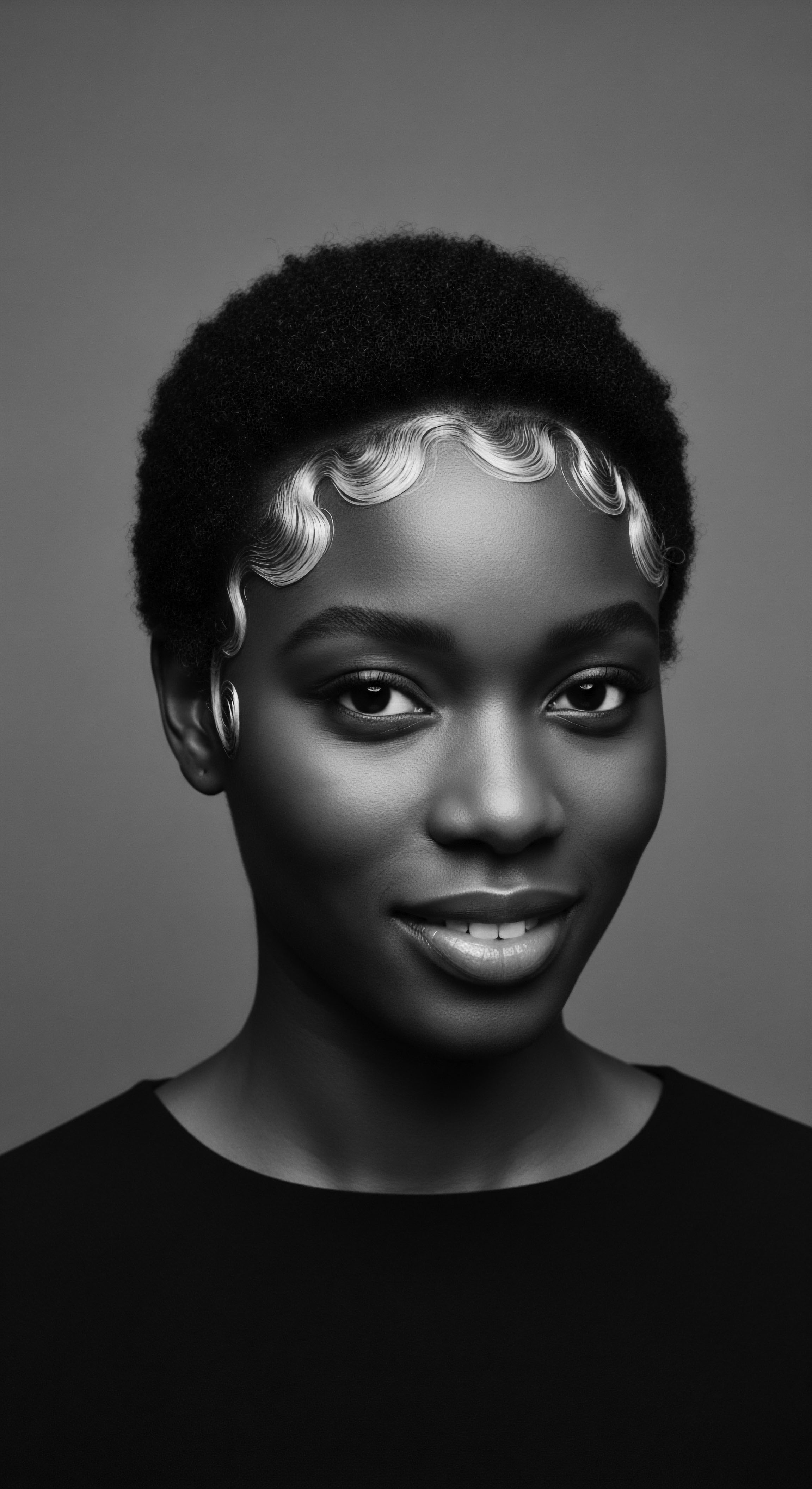
The Earth’s Gifts to Our Strands
Consider the simple act of drawing sustenance from the earth. The very nutrients that nourish our bodies, cultivating strength in bones and vigor in muscles, also contribute to the living tapestry of our hair. The elemental building blocks, absorbed from our environment and diet, are transported through the bloodstream to the hair follicles, those tiny anchors nestled within the scalp. Here, these elements become integrated into the developing hair fiber.
The presence of these minerals speaks volumes about one’s nutritional history and environmental exposures, painting a unique, almost geological, portrait of personal wellbeing. The hair, in this sense, stands as a quiet archive of our journey, a repository of the earth’s gifts.
- Iron ❉ A cornerstone of vitality, iron assists in the transfer of oxygen to hair follicles, a process essential for cell proliferation and robust hair growth. A good supply of iron ensures proper oxygenation of the scalp, contributing to the fiber’s resilience.
- Zinc ❉ Playing a role in tissue repair and cell growth, zinc also supports the health of oil glands around hair follicles. This mineral aids in protein synthesis, a fundamental process for building new hair.
- Magnesium ❉ Contributing to protein production, including keratin, magnesium helps regulate the hair growth cycle and stabilize follicles.
- Copper ❉ Known for its involvement in hair pigmentation, copper helps maintain the hair’s natural color and supports the formation of collagen and keratin.
- Selenium ❉ Acting as an antioxidant, selenium protects hair follicles from damage and supports overall scalp health, influencing hair growth and color.
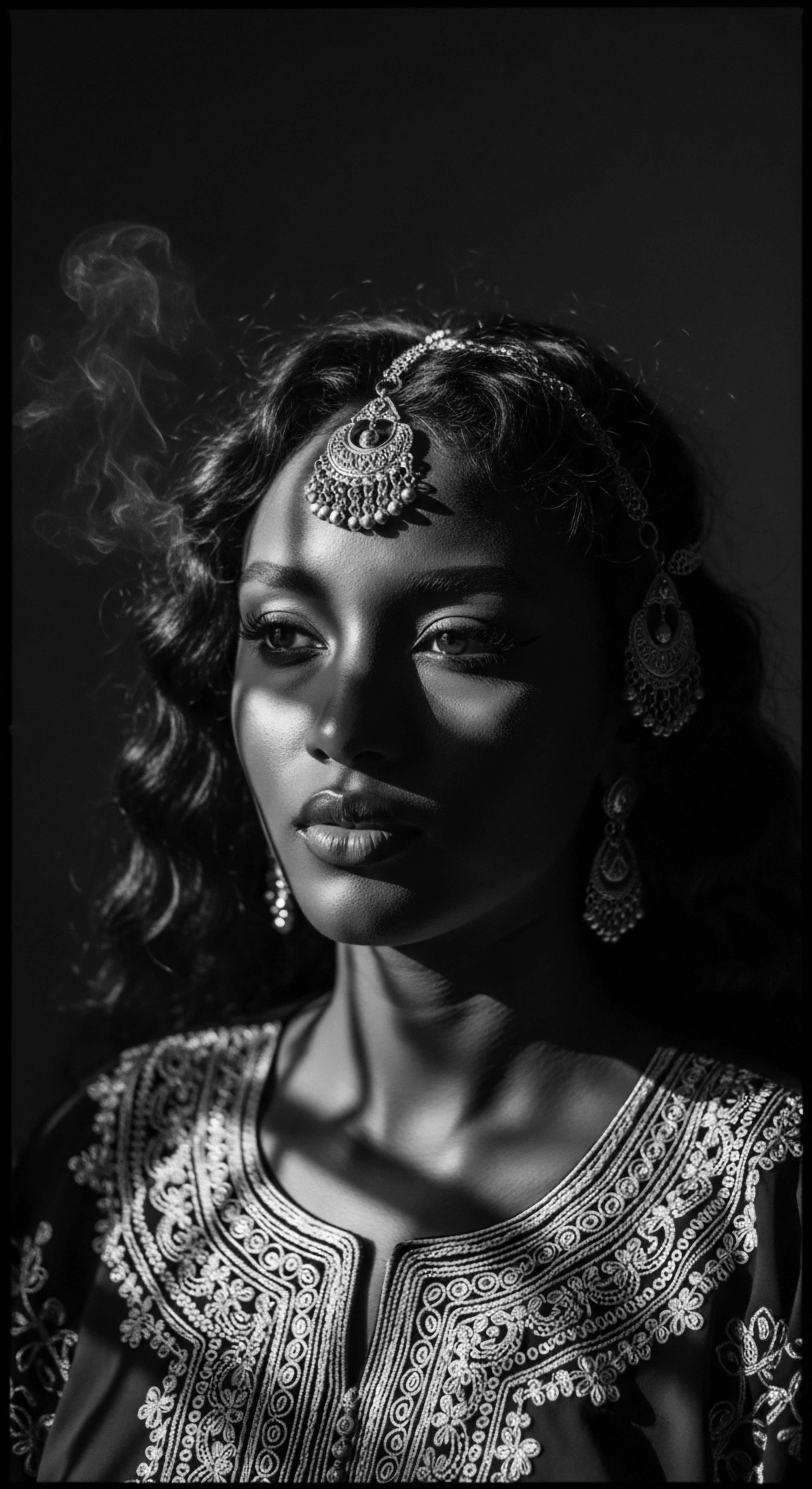
Foundational Elements of Hair’s Vitality
The basic understanding of Mineral Hair Biology acknowledges that these elements, even in minute quantities, are indispensable for optimal hair function. Their absence or imbalance can manifest as visible changes in hair texture, strength, and even its rate of growth. This foundational perspective helps us comprehend why ancestral communities, reliant on natural resources for all aspects of life, instinctively gravitated towards earth-derived remedies and nutrient-rich diets to sustain their hair.
The vibrant health of textured hair across generations often reflects a deep, intuitive alignment with the principles of balanced mineral sustenance, drawn directly from the land. It is a dialogue between human biology and the elemental world, a whisper of ancient knowledge finding its voice in modern understanding.

Intermediate
Moving beyond the simple accounting of elements, an intermediate exploration of Mineral Hair Biology considers the dynamic interplay between these inorganic compounds and the complex biological systems governing hair health. Here, the meaning expands to encompass the nuanced ways minerals engage with cellular processes, enzymatic reactions, and the structural integrity of the hair shaft. This understanding offers insights into how deficiencies or excesses, often rooted in environmental factors or dietary shifts, can influence the very appearance and vitality of textured hair. For communities whose heritage is deeply interwoven with the land, observing these relationships formed the basis of care rituals, a wisdom passed down through generations, often without the lexicon of contemporary science.
The keratinization process, by which hair protein forms, stands as a testament to the orchestrating role of specific minerals. Zinc, for instance, operates as a cofactor for enzymes essential in keratin synthesis, directly influencing the strength and integrity of the hair fiber. Similarly, the presence of sufficient copper contributes to the activation of tyrosinase, an enzyme vital for melanin production, which determines hair color.
This interconnectedness illustrates that hair vitality is not a singular phenomenon, but rather a symphony of microscopic interactions, each informed by the availability of essential minerals. Ancestral practices, deeply attuned to the rhythms of nature, often sought out ingredients that, unbeknownst to them in scientific terms, provided these very chemical precursors for healthy hair.
Mineral Hair Biology at an intermediate level examines how minerals interact with the biological machinery of hair, shaping its strength, color, and growth, often validating long-held ancestral care traditions.

Resonance of Ancient Wisdom
Throughout history, from the sun-drenched plains of Africa to the verdant Caribbean islands, communities developed sophisticated hair care systems that, through generations of observation and practice, intuitively addressed mineral needs. These rituals, often communal and deeply spiritual, were not just about aesthetics; they were acts of preventative health, a dedication to holistic wellbeing that recognized hair as an extension of one’s entire being. The very act of gathering clay from riverbeds or sourcing specific herbs was a testament to an inherited understanding of earth’s bounty.
Consider the Himba women of Namibia, whose radiant red locks are a living monument to ancestral practice. Their daily application of Otjize, a paste of red ochre, butter, and aromatic resin, serves multiple purposes. Beyond its aesthetic and cultural symbolism, the ochre, rich in iron oxides, provides a natural sunblock for their hair and skin.
This centuries-old tradition, deeply rooted in their environment, demonstrates an ancient application of mineral science, offering protection against the harsh desert sun, a wisdom that modern science now affirms. It is a powerful illustration of how practical necessity and beauty coalesced through a deep understanding of natural resources.

The Chemistry of Cultural Care
The ingenuity of these ancestral methods becomes clear when we appreciate the chemical composition of their chosen resources. Clays, for example, harvested from specific geological formations, were not uniform in their composition; their mineral profiles varied, yet communities learned to discern which types were best suited for particular hair concerns.
| Ancestral Practice/Ingredient Red Ochre (Otjize) |
| Geographical Origin Namibia (Himba) |
| Likely Mineral Contributions Iron oxides (Fe), silicates (Si), trace elements. |
| Observed Benefits (Traditional) Sun protection, aesthetic color, symbolic connection to earth. |
| Ancestral Practice/Ingredient Rhassoul Clay |
| Geographical Origin Morocco (Atlas Mountains) |
| Likely Mineral Contributions High in silicon (Si) and magnesium (Mg), also calcium (Ca), iron (Fe). |
| Observed Benefits (Traditional) Cleansing, remineralizing, strengthening, conditioning, improving bounce. |
| Ancestral Practice/Ingredient Ibomvu Clay |
| Geographical Origin Southern Africa |
| Likely Mineral Contributions Iron oxides, quartz, feldspars, aluminium, various silicates. |
| Observed Benefits (Traditional) Skin and hair treatments, cleansing, perceived healing. |
| Ancestral Practice/Ingredient Wood Ash Rinses |
| Geographical Origin Various African Communities (e.g. Himba) |
| Likely Mineral Contributions Potassium (K), calcium (Ca), magnesium (Mg), phosphates. |
| Observed Benefits (Traditional) Cleansing, alkaline pH balance for scalp, strengthening hair. |
| Ancestral Practice/Ingredient These practices illustrate a profound ancestral knowledge of how earth-derived elements sustained vibrant hair and overall wellbeing. |
The practical application of these mineral-rich substances underscores a sophisticated empirical understanding that predates modern laboratories. The rhythmic cleansing with clay, the massaging of mineral-infused oils into the scalp, and the adornment with earth-toned pigments were more than simple routines; they were deep expressions of heritage and self-preservation. This holistic view recognizes that hair is not separate from the body, nor the body from the earth; all are interconnected, and a flourishing depends on harmonious interaction.

Hair’s Historical Nourishment
The exploration of Mineral Hair Biology at this intermediate stage serves as a bridge, connecting the discernible properties of minerals with the ancient, embodied knowledge of their proper application. It invites us to consider how cultural heritage holds keys to understanding wellness, often illuminating pathways that contemporary science is now rediscovering. The continued vitality of traditional hair practices, especially within Black and mixed-race communities, stands as a testament to the enduring power of these elemental connections. They offer not just care for the hair, but a spiritual grounding, linking individuals to a long lineage of wisdom and resilience.
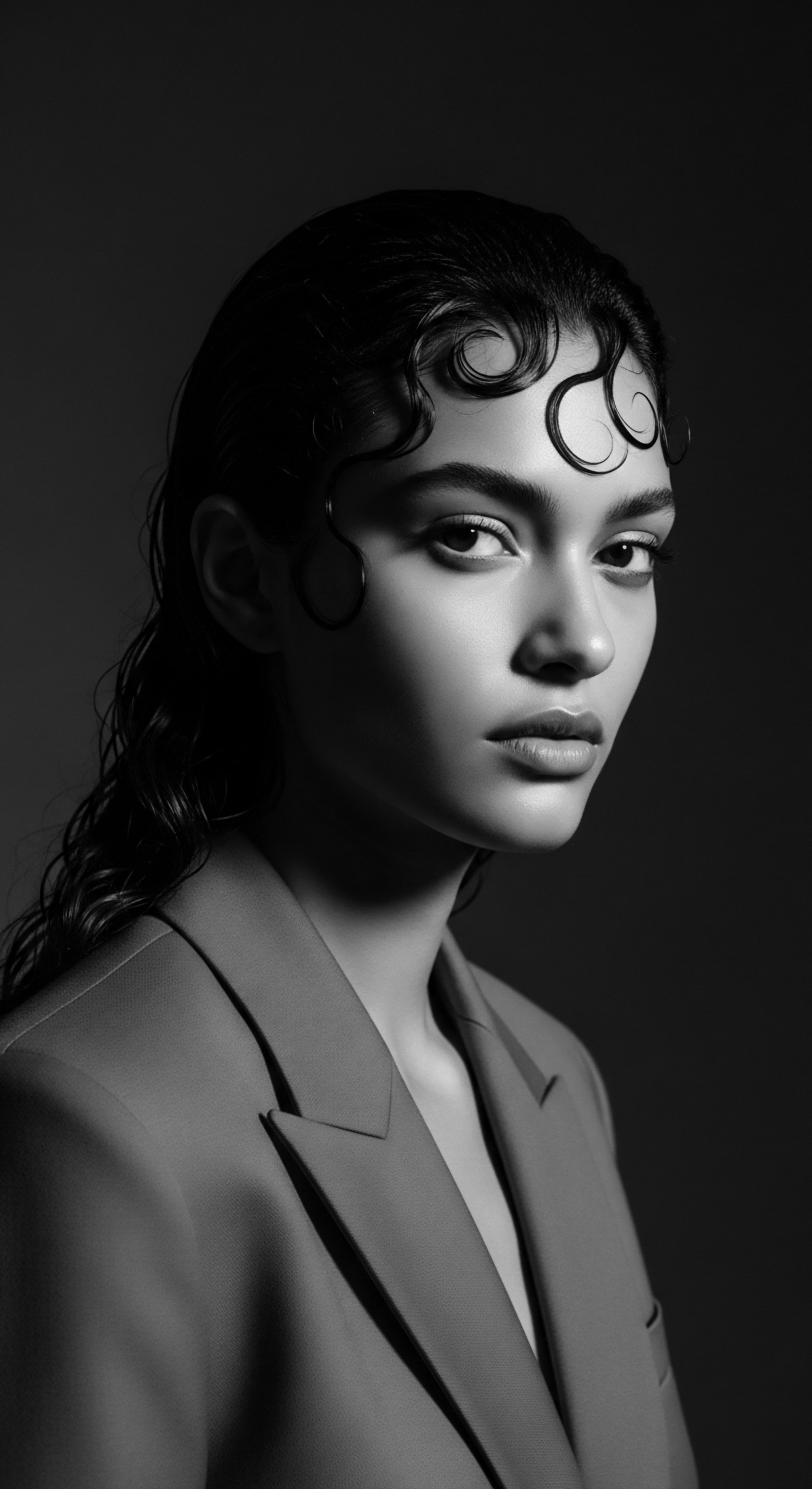
Academic
From an academic vantage, the definition of Mineral Hair Biology ascends to a discourse that integrates molecular mechanisms, nutritional science, anthropological insights, and environmental epidemiology. It is a comprehensive interpretation, moving beyond basic identification to a full comprehension of the profound, often subtle, influence of inorganic elements on the human pilosebaceous unit. This academic meaning explores how minerals, functioning as cofactors for enzymes, structural components within the keratin matrix, and regulators of cellular pathways, dictate the very morphology, resilience, and longevity of hair fibers.
Such an analysis demands a critical lens, examining how both endogenous metabolic processes and exogenous environmental exposures shape the mineral signature embedded within hair, thereby offering a diagnostic window into systemic health and historical lived experiences. The inquiry necessarily considers the intricate web of interactions where mineral availability impacts gene expression, inflammatory responses, and oxidative stress, all of which play roles in hair follicle function and integrity.
The hair shaft, a biorepository, captures a chronological record of mineral intake and environmental interactions. Every strand holds an archive, reflecting the body’s internal milieu and its engagement with the external world over time. Studies in Hair Tissue Mineral Analysis (HTMA), for instance, utilize hair samples to assess the body’s long-term mineral status and exposure to heavy metals, offering insights that blood tests might miss due to homeostatic regulation. This non-invasive analytical tool provides a unique perspective on the sustained availability of essential trace elements like zinc, iron, copper, and selenium, which are indispensable for hair growth, pigmentation, and overall structural integrity.
Zinc, for example, is a recognized regulator of keratin production and influences the hair growth cycle by inhibiting follicle regression and accelerating recovery. Copper is essential for activating tyrosinase, the enzyme responsible for melanin synthesis, thus directly impacting hair color. The academic pursuit of Mineral Hair Biology thus transcends superficial observations, delving into the very foundations of cellular metabolism that sculpt each individual strand.
Mineral Hair Biology, through an academic lens, meticulously examines the molecular roles of minerals in hair physiology, recognizing hair as a bio-archive reflecting complex interactions between diet, environment, and ancestral heritage.
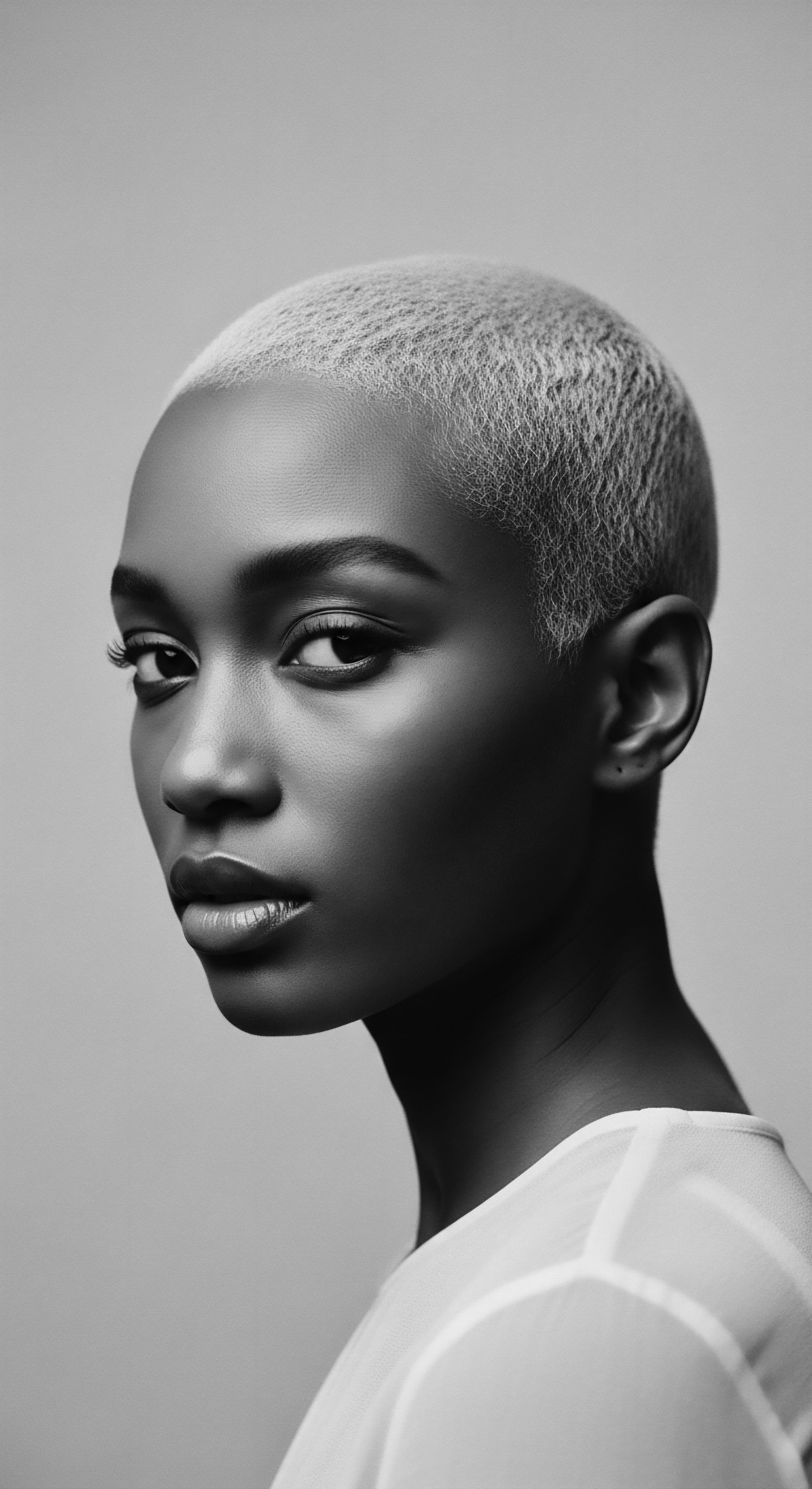
The Microcosm of the Helix
The scientific literature underscores a direct correlation between optimal mineral concentrations and hair health outcomes. Iron deficiency, often leading to anemia, significantly contributes to hair loss due to impaired oxygen transport to the hair follicles. Similarly, research indicates a compelling link between low serum zinc levels and various forms of alopecia, including premature hair graying. A study by Kil et al.
(2013) found that among patients experiencing hair loss, including those with alopecia areata and telogen effluvium, mean serum zinc concentrations were significantly lower compared to control groups (84.33 ± 22.88 µg/dL vs. 97.94 ± 21.05 µg/dL, p=0.002). This research further recommended zinc replacement when levels fell below 70 µg/dL to improve hair regrowth in some patients. This rigorous approach to mineral analysis highlights not only the critical nature of these micronutrients but also their precise involvement in maintaining the hair’s intricate life cycle.
The academic understanding of Mineral Hair Biology also encompasses the complexities of mineral absorption, bioavailability, and antagonism. For instance, the presence of certain dietary components or other minerals can either enhance or hinder the absorption of key elements vital for hair. This complexity necessitates a holistic consideration of diet and lifestyle, recognizing that isolated supplementation may not always address underlying imbalances or interactions. The very structure of hair, with its disulfide bonds and protein cross-linking, relies on the adequate supply of minerals like sulfur and copper, which contribute to the hair’s mechanical strength and resilience.

Ancestral Echoes in Modern Science
The wisdom of ancestral hair care practices, passed down through generations, finds profound validation within this academic framework. While ancient practitioners did not employ spectrophotometers or atomic absorption analysis, their empirical observations led them to utilize natural resources rich in precisely those minerals now identified as critical for hair vitality. The ceremonial use of mineral-rich clays, plant ashes, and specialized oils across diverse African and diasporic communities represents an embodied knowledge system that intuitively understood the principles of Mineral Hair Biology. These practices often served as a bulwark against environmental stressors and dietary deficiencies, sustaining hair health even in challenging circumstances.
Consider the profound impact of forced dietary shifts on Indigenous communities, a historical example that powerfully illuminates the Mineral Hair Biology’s connection to heritage. For many First Nations and Indigenous peoples in North America, traditional diets were rich in protein, essential fatty acids, and a spectrum of minerals, including iron and zinc, derived from wild game, fish like salmon, and native plant foods. These dietary practices, interwoven with cultural and spiritual identities, provided a robust nutritional foundation. However, the imposition of colonial food systems, characterized by nutrient-poor market foods, led to a significant decline in the consumption of these traditional, mineral-dense foods.
This shift contributed to elevated rates of chronic diseases, such as Type II diabetes and heart disease, and critically, increased instances of nutrient deficiencies like anemia within these populations. While explicit studies on hair mineral analysis in these specific historical contexts may be rare, the foundational principles of Mineral Hair Biology suggest that a systemic decrease in dietary iron and zinc, stemming from the disruption of ancestral eating patterns, would undoubtedly impact hair quality, density, and growth over generations. The health of the hair, inextricably linked to overall physiological wellness, would reflect these deeper, community-wide nutritional vulnerabilities. The diminished access to traditional food sources means that the very elements historically woven into the hair’s resilience were lessened, demonstrating a tangible connection between historical policy, environmental access, and individual biological expression. This enduring legacy serves as a poignant reminder that the health of our hair is not merely a cosmetic concern but a profound indicator of historical experience and ancestral wellbeing.
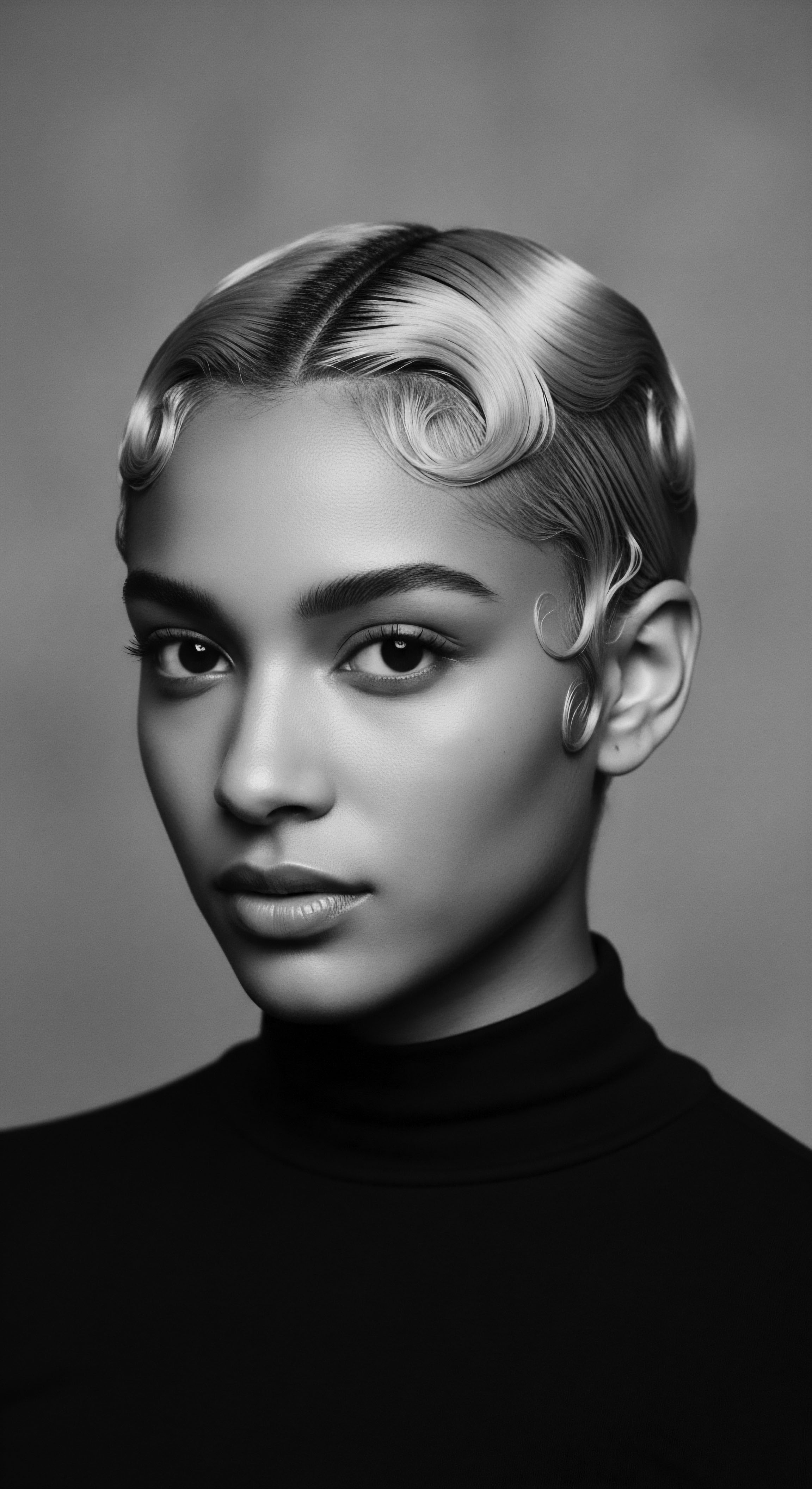
Environmental Intersections and Shared Legacies
The scope of Mineral Hair Biology within an academic context also compels us to examine the intersection of environmental factors and genetic predispositions. For instance, populations residing in areas with mineral-deficient soils or water sources may face inherent challenges in obtaining adequate dietary minerals, potentially affecting their hair health over successive generations. Conversely, areas rich in specific mineral deposits, such as the Atlas Mountains from which Rhassoul clay is sourced, often fostered centuries-long traditions of topical applications, leveraging localized mineral abundance for hair care. This environmental embeddedness means that the heritage of hair care is often a direct reflection of ecological circumstances, demonstrating human ingenuity in adapting and thriving with available resources.
- Dietary Shifts ❉ Changes from traditional diets rich in whole, unprocessed foods to modern diets high in refined sugars and processed ingredients can lead to reduced intake of essential hair minerals, impacting hair health.
- Bioavailability ❉ The form in which minerals are consumed significantly impacts their absorption. For instance, heme iron from animal sources is more readily absorbed than non-heme iron from plant sources, though vitamin C can enhance plant-based iron absorption.
- Environmental Exposure ❉ Exposure to heavy metals like lead or mercury, often reflected in hair analysis, can interfere with the metabolism of beneficial minerals, leading to compromised hair health and structural alterations.
- Genetic Polymorphisms ❉ Individual genetic variations can influence how efficiently minerals are metabolized and utilized by the body, explaining differences in hair response to similar mineral intake across individuals and populations.
- Topical Application Benefits ❉ While dietary intake is primary, topical application of mineral-rich clays or infused oils can offer localized benefits, contributing to scalp health and external hair shaft fortification, echoing ancient external treatments.
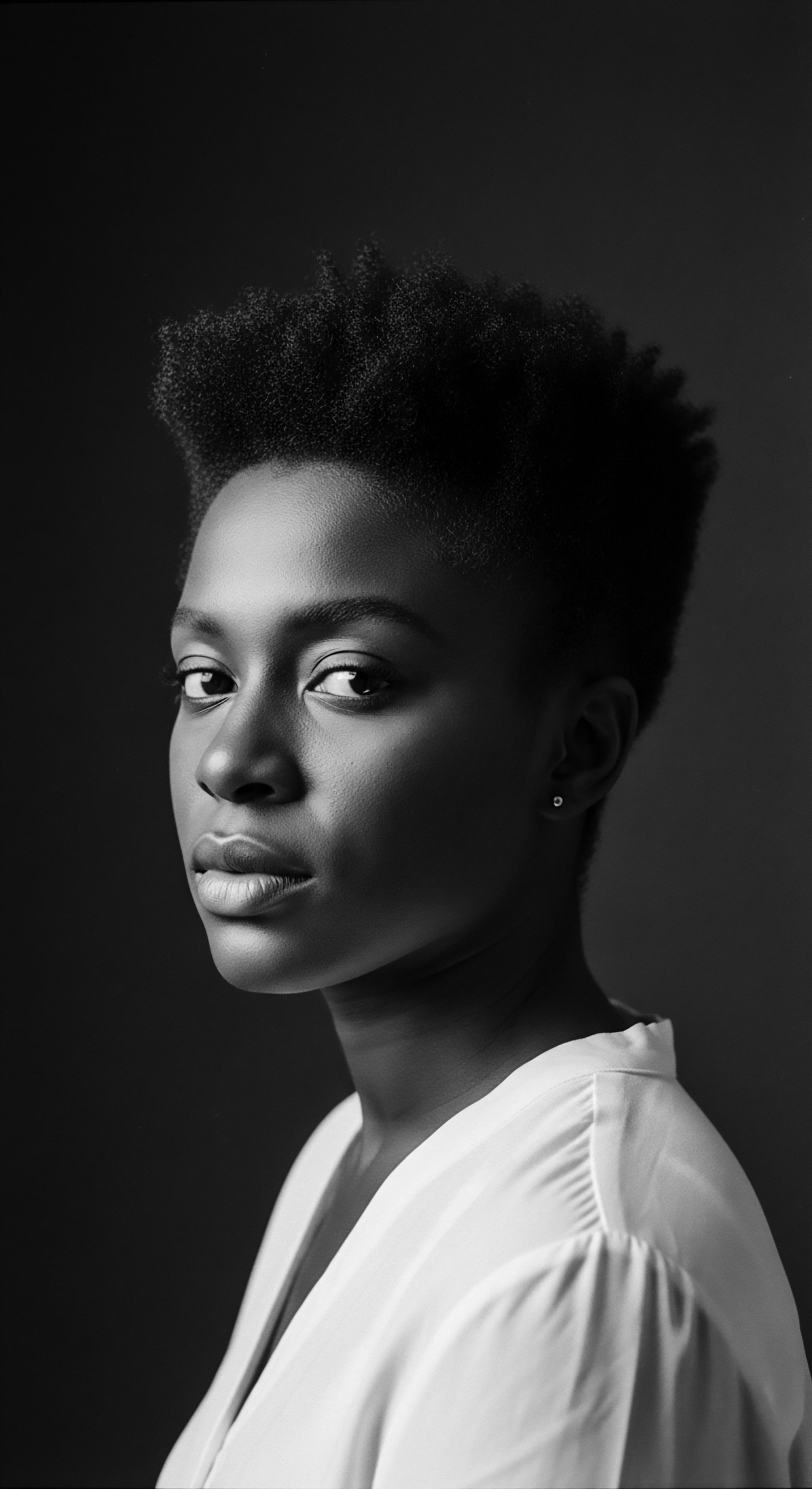
The Enduring Wisdom of Adaptation
The academic investigation of Mineral Hair Biology therefore becomes a multidisciplinary pursuit, calling upon fields ranging from dermatology and nutrition to anthropology and environmental science. It moves beyond a singular focus on deficiency symptoms to understand the optimal balance and synergistic relationships between minerals. This deep engagement with the topic ultimately reinforces the enduring wisdom embedded within ancestral hair care practices, revealing how communal knowledge, honed over millennia, often provided effective solutions that modern science is now painstakingly quantifying and validating. The profound meaning of Mineral Hair Biology is thus a celebration of both the intricate biological artistry of the hair and the timeless ingenuity of human adaptation to the earth’s elemental offerings.

Reflection on the Heritage of Mineral Hair Biology
As we conclude our contemplation of Mineral Hair Biology, the echoes from the earth’s ancient past gently remind us of a profound truth ❉ our hair, in its vibrant and varied forms, remains intrinsically connected to the very essence of the land. This scientific discipline, when viewed through the rich lens of heritage, transcends mere biological categorization. It becomes a living, breathing archive, meticulously recording not only the elemental exchanges within our bodies but also the enduring legacy of ancestral practices, the resilience of communities, and the deep, unspoken stories carried within each strand. The tender thread of ancestral wisdom, often expressed through the intuitive gathering of mineral-rich clays or the purposeful selection of botanicals, speaks to a holistic understanding of wellbeing that saw no division between the internal landscape of the body and the external bounty of nature.
The meaning of Mineral Hair Biology, particularly for textured hair, is therefore imbued with layers of cultural significance. It speaks to the ingenuity of our forebears who, without the benefit of microscopes or chemical assays, cultivated sophisticated hair care traditions that provided vital minerals, protecting and nurturing hair in diverse environments. These traditions stand as testaments to observation, adaptation, and an intimate dialogue with the natural world. From the sun-kissed ochre of the Himba to the remineralizing properties of Rhassoul clay used by North African communities, these practices were not simply cosmetic; they were acts of reverence for self, community, and the earth, embodying a continuity of care across generations.
In recognizing the profound connection between dietary mineral shifts and health outcomes in Indigenous communities, we comprehend that Mineral Hair Biology is more than a biological subject; it is a historical narrative. It beckons us to look deeper, to honor the knowledge systems that sustained our ancestors, and to carry forward a legacy of informed, mindful care. Our hair, the unbound helix, continues to voice identity, shaping not only individual futures but also the collective story of human connection to the elemental source.
It is a continuous journey of discovery, where every scientific revelation feels like a rediscovery of wisdom that has always resided in the earth, and in the hands that cared for hair long before science gave names to its microscopic wonders. This enduring appreciation for our hair’s elemental heritage remains a guiding light, prompting us to look to both past and present for its flourishing.

References
- Arif, Tasleem. “The Power of Nutrients ❉ How Vitamins and Minerals Support Hair Health.” Journal of Clinical and Aesthetic Dermatology, 2024.
- Carretero, M. I. & Pozo, M. (2009). “Clay Minerals and Their Beneficial Effects Upon Human Health. A Review.” Applied Clay Science, 44(3-4), 187-195.
- Chaudhri, S. & Jain, N. K. (2009). Herbal Cosmetics. Eastern Economy Edition.
- Gomes, C. S. F. & Silva, J. C. (2007). “Clays in Cosmetics and Pharmaceuticals ❉ A Review.” Geologica Acta, 5(2), 105-117.
- Hewitt, H. (1992). “Skin protection with clay minerals.” Journal of Cosmetic Science, 43(2), 65-72.
- Juch, J. P. et al. (1994). “Sun protection factor of cosmetic products containing inorganic pigments.” Journal of Photochemistry and Photobiology B ❉ Biology, 24(2-3), 205-209.
- Kil, M. S. Kim, C. W. & Kim, S. S. (2013). “Analysis of Serum Zinc and Copper Concentrations in Hair Loss.” Annals of Dermatology, 25(4), 405-409.
- Kuhnlein, Harriet V. and Receveur, Olivier. (1996). “Traditional food systems in an urbanizing world.” International Nutrition Foundation Food and Nutrition Bulletin, 17(2), 148-155.
- Morekhure-Mphahlele, R. Focke, W. W. & Grote, W. (2018). “Characterisation of vumba and ubumba clays used for cosmetic purposes.” South African Journal of Science, 114(7/8), 1-8.
- Sperling, B. (2020). Hair Tissue Mineral Analysis ❉ A Clinician’s Guide to Mineral Metabolism, Stress, and Optimal Health. North Atlantic Books.
- Tributsch, H. (2016). “Ochre Bathing of the Bearded Vulture ❉ A Bio-Mimetic Model for Early Humans towards Smell Prevention and Health.” Cosmetics, 3(4), 33.
- UNESCO. (1981). General History of Africa, Vol. III ❉ Africa from the Seventh to the Eleventh Century. Heinemann Educational Books.
- Vickers, R. (2007). Understanding the Himba Tribe of Namibia. University of Nebraska-Lincoln.
